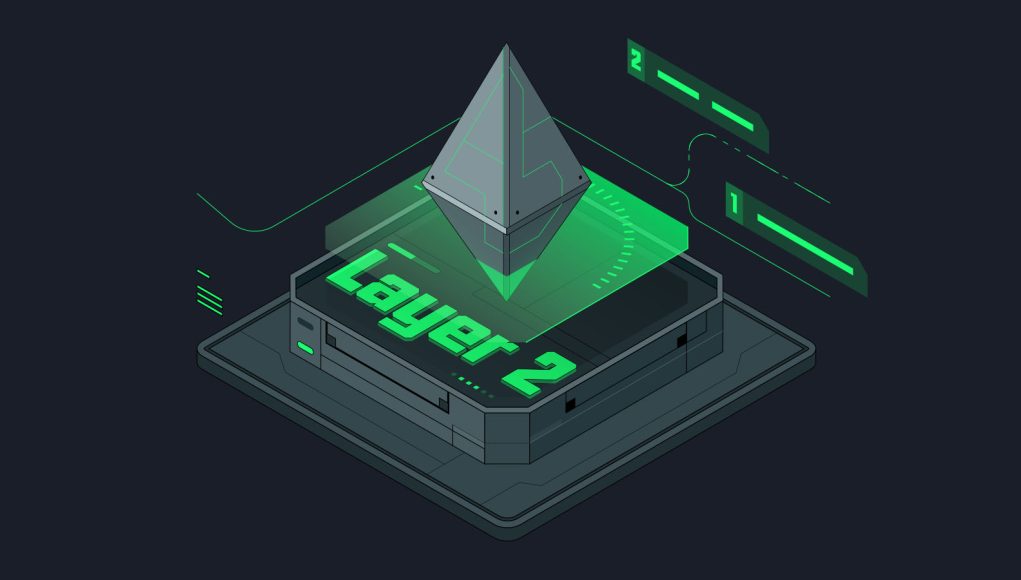Cryptocurrencies like Bitcoin and Ethereum have revolutionized finance, but scalability issues have slowed adoption. High gas fees, slow transactions, and network congestion make crypto payments inconvenient.
Layer 2 solutions aim to fix this by processing transactions off-chain while keeping the security of the main blockchain. In 2025, Layer 2 adoption is booming, making crypto transactions faster, cheaper, and more scalable than ever before.
Let’s dive into what Layer 2 solutions are, how they work, their benefits, and the top Layer 2 projects making an impact today.
1. What Are Layer 2 Solutions?
Layer 2 (L2) solutions are secondary frameworks or protocols built on top of a blockchain (Layer 1) to enhance speed and scalability.
While Layer 1 blockchains like Ethereum and Bitcoin handle security and decentralization, they often suffer from:
❌ Slow Transactions – Ethereum can handle only ~15 transactions per second (TPS).
❌ High Gas Fees – Fees can spike above $50 per transaction during congestion.
🔹 Layer 2 solutions take transactions off-chain, process them separately, and then settle back on the main blockchain in batches, reducing congestion.
✅ Faster Transactions – Process thousands of TPS.
✅ Lower Fees – Reduce gas fees by up to 90%.
✅ Scalability – Support mass adoption of DeFi, NFTs, and payments.
2. How Do Layer 2 Solutions Work?
There are several types of Layer 2 solutions, each using different technologies to improve scalability:
🔹 Rollups (Optimistic & ZK-Rollups)
Rollups bundle multiple transactions into one and post the data on Layer 1.
- Optimistic Rollups – Assume transactions are valid unless disputed (e.g., Arbitrum, Optimism).
- Zero-Knowledge (ZK) Rollups – Use cryptographic proofs for security (e.g., StarkNet, zkSync).
📌 Rollups can reduce gas fees by over 90% while keeping Ethereum’s security.
🔹 State Channels (Lightning Network, Raiden Network)
- Users lock funds in a multi-sig wallet and transact off-chain.
- Transactions are instant and fee-free.
- Used for Bitcoin’s Lightning Network and Ethereum’s Raiden Network.
🔹 Sidechains (Polygon, Ronin, xDai)
- Independent blockchains connected to Ethereum or Bitcoin.
- Process transactions separately, then sync with Layer 1.
- Example: Polygon (MATIC) is a popular Ethereum sidechain.
🔹 Plasma Chains (OMG Network, Polygon Plasma)
- Create child chains that process transactions before settling on Ethereum.
- Great for DeFi, gaming, and payments.
Each Layer 2 method has different trade-offs between security, decentralization, and speed.
3. Why Are Layer 2 Solutions Important?
Layer 2 scaling is crucial for mainstream crypto adoption. Without it, Ethereum and Bitcoin cannot handle global-scale usage.
✔ Key Benefits of Layer 2 Solutions
✅ Lower Transaction Costs – Fees can drop from $50 to a few cents.
✅ Faster Processing – Transactions confirm instantly instead of waiting minutes.
✅ Mass Adoption of DeFi & NFTs – Enables millions of users without congestion.
✅ Eco-Friendly Scaling – Reduces energy consumption compared to Layer 1.
✅ More Use Cases – Enables microtransactions, gaming, and real-time payments.
4. Top Layer 2 Solutions in 2025
Here are some of the most popular Layer 2 projects transforming crypto:
🔹 Arbitrum (Optimistic Rollup for Ethereum)
✔ One of the most widely used Ethereum Layer 2 solutions.
✔ Over $2 billion in total value locked (TVL).
✔ Supports DeFi protocols like Uniswap, Aave, and Curve.
🔹 Optimism (Optimistic Rollup for Ethereum)
✔ Reduces Ethereum gas fees by ~90%.
✔ Backed by the Ethereum Foundation.
✔ Used by Synthetix, Velodrome, and Perpetual Protocol.
🔹 Polygon (Sidechain for Ethereum)
✔ Supports high-speed, low-cost transactions.
✔ Home to major dApps, including OpenSea and Uniswap.
✔ Expanding into ZK-Rollups with Polygon zkEVM.
🔹 zkSync (Zero-Knowledge Rollup for Ethereum)
✔ Uses ZK-proof technology for security and speed.
✔ Enables instant transactions with minimal fees.
✔ A rising competitor to Arbitrum & Optimism.
🔹 Lightning Network (Bitcoin’s Layer 2 Payment Network)
✔ Allows instant Bitcoin payments with near-zero fees.
✔ Used for remittances and merchant payments.
✔ Increasing adoption by El Salvador and major crypto exchanges.
Each project is working to improve scalability and lower costs, bringing crypto closer to mainstream adoption.
5. The Future of Layer 2 Scaling
Layer 2 solutions are rapidly evolving, and the future looks promising:
🔹 The Rise of ZK-Rollups
- Ethereum founder Vitalik Buterin believes ZK-Rollups will be the long-term solution for scalability.
- Projects like StarkNet and zkSync are leading the charge.
🔹 Cross-Chain Compatibility
- Bridges between Ethereum, Solana, and BNB Chain will enable seamless transactions.
- Example: LayerZero and Wormhole bridge different Layer 2s.
🔹 Institutional Adoption
- Companies like Visa and PayPal are testing Layer 2 for crypto payments.
- DeFi will become more scalable and cost-effective for mainstream finance.
As Layer 2 improves, crypto can truly scale to millions of users without congestion.
6. Final Thoughts: Will Layer 2 Solutions Dominate Crypto in 2025?
Layer 2 solutions are critical for the future of cryptocurrency. By making transactions faster and cheaper, they enable mass adoption of DeFi, NFTs, and Web3 applications.
🔹 Ethereum Rollups (Arbitrum, zkSync) and Bitcoin Lightning Network are leading the way.
🔹 Gas fees and transaction times are dropping, making crypto more accessible.
🔹 Layer 2 innovation in AI, gaming, and payments will transform Web3.
🚀 The next big question: Will Layer 2 solutions make traditional finance obsolete? Let us know in the comments!



































